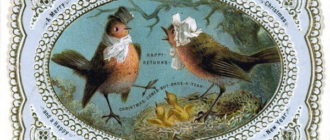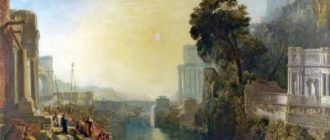
The Battle of Borodino is a panoramic painting by Franz Alekseevich Roubaud, commissioned by Nicholas II for the centenary of the Great Battle of Borodino, the largest battle of the Patriotic War of 1812. This monumental battle piece seems to immerse the viewer in the most dramatic and decisive moment of the battle, making him a participant in those old events. The master recreated in detail the moment of the fall of the Semyonov flushes, when the Russian positions were subjected to fierce cavalry attacks by Napoleon’s troops.

Description of the picture
Almost impossible to make out individual people on the canvas it is all emotion, rage, “mixed in a bunch The only character whose face is turned to the viewer is a Russian cavalryman with a bloody forehead in a pandemonium of Saxon cuirassiers. It is believed that the prototype of this rider, who outstripped his squad and broke into the midst of enemies, was a real hero Life Guardsman Ignatius Rabas.
It is curious how the author managed to recreate in detail the atmosphere of the battle, all its smallest nuances. But not only the fervor of battle is depicted in the masterpiece. The artist managed to convey the entire tragedy of what is happening. Just look at the flaming huts and ruins, horses trampling on uncompressed bread. And besides, he placed the key figures in their places with the greatest precision. On an unmown rye field, where the battle is taking place, immediately behind the attacking cuirassiers, the figure of Barclay de Tolly is visible. He leads a group of senior officers behind the rushing cuirassiers.

Painting “Battle of Borodino” by Franz Roubaud a hymn to the greatest battle of the war
In the background you can see the village huts of Gorki and a group of people. This is the headquarters of Mikhail Illarionovich Golenishchev-Kutuzov, and he himself, watching the battle. Not far from the village, reserve troops were stationed the Semenovsky, Preobrazhensky and Izmailovsky regiments.

Here is a figurine of Napoleon on a white horse at the Shevardinsky redoubt on the banks of the Kamenka, surrounded by four bodyguards. And in the distance you can see the white tents of a field hospital and a wagon carrying General Bagration, mortally wounded in battle. More than 130 thousand French took part in that battle, against whom 120 thousand Russian soldiers fought. The losses were: about 43 thousand Russians and about 38 thousand French. Mikhail Kutuzov called the Battle of Borodino “an eternal monument to the glory of Russian weapons.” And Napoleon admitted that in that battle the greatest courage was shown and the least results achieved in his entire military career.

Franz Roubaud is a great Russian battle painter of French origin.
He was born into the family of an emigrant bookseller. From a young age, Roubaud was interested in battle painting. Even during his studies in Munich, he came home annually and traveled to the places of battles. The result of these trips was stacks of sketches, which became the basis for future paintings.
In the early 1900s, Russia began to prepare for the celebration of the centenary of the Patriotic War. In 1909, the artist received an offer from the emperor himself to create a masterpiece for this holiday. True, it was not yet about the panorama, but only about the sketches, which were to receive the approval of Nicholas II. Initially, Roubaud planned to depict the battle for the Raevsky battery during the counterattack of Ermolov and Kutaisov. Alas, the king rejected the sketch. The artist was advised to paint the attacks of the Napoleonic cavalry politics and the expansion of the Entente intervened. The artist was terribly unhappy with this advice, but he did the job with honor. In autumn 1912, the panorama first appeared before the audience in the round hall of the pavilion, which was specially built on Chistoprudny Boulevard.

The painting “Battle of Borodino” by Franz Roubaud was completed in 11 months. The preparation took about two years. The masterpiece endured all the tests of time with honor, endured many hardships during the Great Patriotic War, and was under restoration for 14 years. Since 1962, the painting has been the center of the museum exposition of the complex dedicated to the Patriotic War of 1812.








